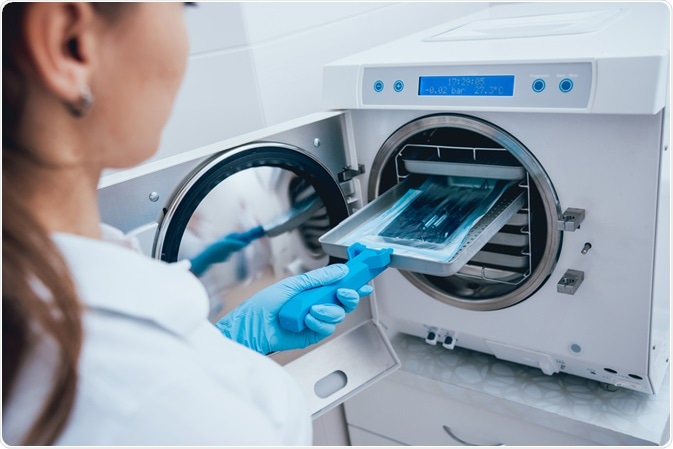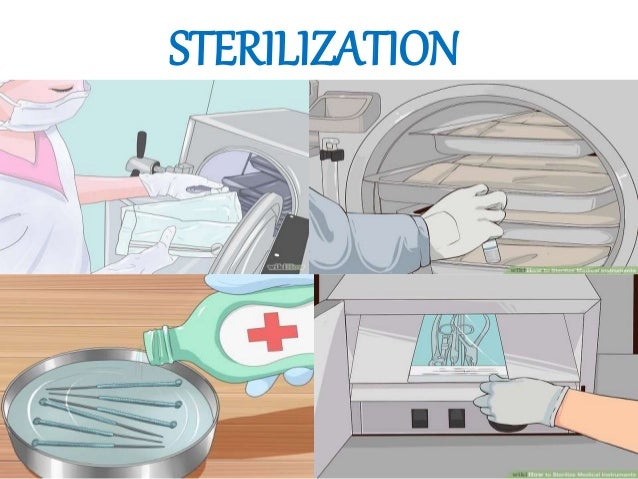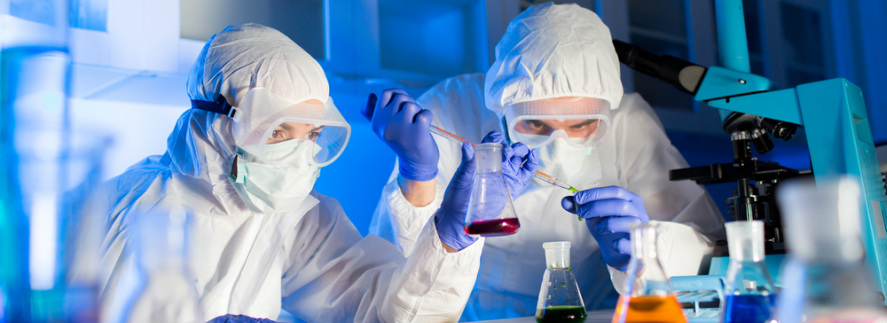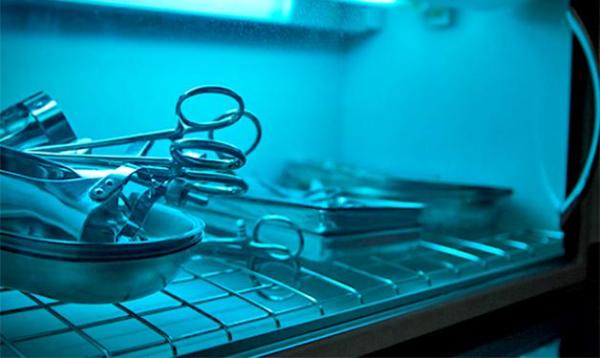Sterilization is any medical method to destroy microorganisms including bacteria, viruses, and also fungi. The sterilization services help to remove, kills, or deactivate all forms of life and other biological agents. However, the purpose of sterilization is to prevent disease transmission and keep our surroundings clean and hygienic. A sterile surface/object is completely free of living microorganisms and viruses.

Sterilization can be achieved through various methods like heating, using chemicals like ethylene oxide, high pressure, and filtration, and also even using Sunlight. Similarly, the use of sterilization services can see mainly in the medical and surgical areas. The aim of sterilization is the reduction of initially present microorganisms or other potential pathogens.
The number of microorganisms after sterilization time is given by
N/N0 = 10^ (-t/D)
Where, N- Number of microorganism
t- Sterilization time
D- Function of sterilization condition, it varies with the type of microorganisms.
The factors that affects the sterility of a medical device are;
- The number of organisms on the device before sterilization
- Resistance of these organisms to the sterilization process
- Characteristics of the sterilization process
- Length of time of exposure to sterilizing condition
IMPORTANCE OF STERILIZATION

The process of sterilization prevents;
- Contamination in sterile products
- Transmission of pathogenic microorganisms which are responsible for causing disease in plants, animals, and also human beings
- Decomposition and spoilage of food and food products
- Contamination of unwanted microbes in pure culture, antibiotic, enzyme, vitamins, fermentation, and also other industries process
- Contamination in aseptic areas or instruments.
METHODS FOR TESTING STERILIZATION
There are many variations of sterility exists. Two of the most common methods for testing sterilization are,
- Sterility test
- Bioburden test
STERILITY TEST
The sterility test demonstrates the presence or absence of microorganisms. The most common method for detecting live organisms on a device is by placing the device in a nutrient solution. It can also be detected by rinsing the device with a nutrient solution or by incubating the solution at a specific temperature for a period of time. However, the growth of an organism after this indicates the sterility level.
BIOBURDEN TEST
The bioburden test demonstrates the total number of a microorganism on a device. In this method, the first step is to filter the solution through a sub-micron filter. Then, place the filter on a nutrient gel and incubate it for a period of time. As a result, each organism trapped on the filter gives rise to a colony and it can be measured.
METHODS OF STERILIZATION
The common methods of sterilization of medical devices are classified into two broad areas. They are;
- Physical methods
- Chemical methods
PHYSICAL METHODS
The physical methods of sterilization include dry heat, steam, sunlight, filtration, radiation, and plasmas. Similarly, the radiation process can be done in a variety of types like gamma radiation, electron beam, x-ray, ultraviolet, microwave, and white light. The action of sunlight is primarily due to UV rays. For example in tropical areas, bacteria in water can destroy by sunlight.
CHEMICAL METHODS
In the chemical method of sterilization a variety of chemicals used both in liquid and vapor form. It includes ethylene oxide, propylene oxide, chlorine dioxide, and also ozone gases. Action of chemical agents is mainly through protein coagulation, disruption of cell membrane, and also substance competition. The gas used in chemical sterilization is safe and non-inflammable. However, Ethylene oxide is the most widely used gaseous sterilization agent nowadays.
HOW TO SELECT CORRECT STERILIZATION PROCESS?

The selection of a sterilization process is a very important task. When selecting a sterilization process consider the characteristics of the device to be sterilized at first. The three main characteristics, materials, design, and also dimensions will determine other functions of it. The thermal stability, absorption of humidity, reaction with chemical sterilants, radiation stability, ability to withstand pressure, and vacuum condition are also determined by these three characteristics of a sterilization process.
The factors need to consider in the sterilization process are,
- Volume of product to steriliz
- Processing time, ease of validation
- Operating costs
- Capital cost of equipment
- Facility costs.
ADVANTAGES AND DISADVANTAGES
The sterilization method has both advantages and disadvantages just like any other method of cleaning. However, differences in the nature of the sterilization process is the factor that determine the advantage and disadvantage of each.
| METHOD | ADVANTAGES | DISADVANTAGES |
| Heat sterilization | Most widely used and reliable method of sterilization, involving the destruction of enzymes and also other essential cell constituents. | Can be applied only to the thermo stable products |
| Gaseous sterilization | Penetrating ability of gases | Gases being alkylating agents are potentially mutagenic and carcinogenic |
| Radiation sterilization | A useful method for the industrial sterilization of heat sensitive products. | Undesirable changes occur in irradiated products |
| Filtration sterilization | It is used for both the clarification and sterilization of liquids and gases. It is also capable of preventing the passage of both viable and non-viable particles. | Does not differentiate between viable and non-viable particles. |
STERILIZATION AND DISINFECTION

Both sterilization and disinfection are related terms. Two of these are decontamination processes, while disinfection is the process of eliminating harmful microorganisms, sterilization is the process of killing all microorganisms. The three processes of cleaning, disinfection, and sterilization commonly called ‘disinfection’. Hence the usage of all these related terms causes confusion.
Cleaning is the action of removing impurities from the things we use and from the place we live. Disinfection is the process of killing pathogens and disease-causing organisms. However, it is done by using disinfectants which is an agent used to disinfect a surface or an object. There are also several disinfecting and sterilization services providers across the world. The New Star Pest control is one of the best companies in UAE. It has a group of experienced professionals who provide great service to our clients in a friendly manner. Above all, we never do any adjustments in the quality of services provided. Customer satisfaction is one of the most important factors that we look for while providing service.
In other words, a proper disinfection process makes a surface highly hygienic and the chance for transmission of infection will be very less. Disinfection can be done only for non-living surfaces. Because it will damage the living skin and also skin may cause allergic reactions with disinfectants. In sterilization, the medium is also completely free from all microbes. Disinfection kills only vegetative cells where sterilization services kill both vegetative cells and spores.
ALSO READ

